Combat "Gremlins" US Air Force: the revival of the concept of aircraft carrier aircraft
Projects of aircraft carriers were developed back in the First World War. In the UK, the Bristol Scout fighter was deployed on the Porte Baby aircraft in order to increase the effectiveness of the fight against German airships.
In turn, the Germans considered placing fighters on board the airship to protect them from British fighters. In the 1917, the Albatros D.III fighter was dropped from the zeppelin L-35, which then made a safe landing.
Both the British and the German aircraft carrier projects have not gone beyond the test stage.
After the First World War, the Americans took the baton. They made several attempts to create airships - carriers of fighters intended for marine reconnaissance. Huge airships fleet US Akron and Macon were to carry four to five Curtiss F9C Sparrowhawk fighters. Both aircraft carriers crashed, after which the US airship program was curtailed.
In the USSR, the project of the flying aircraft carrier "Link" was developed since the beginning of the 30-s of the XX century. The heavy bombers TB-1 and TB-3 were envisaged as carriers, and the bombers TB-7 and MTB-2 were considered in the future. As fighters, as the project progressed, the planes were intended: I-4, I-5, I-Z, I-16. The work was carried out quite actively, many conceptual projects were considered and practical tests were conducted. In the future, it was planned to create an aircraft with eight aircraft on board (two aircraft should be installed immediately and six more docked after takeoff). Plans prevented the war.
By the beginning of World War II, a project of an improved aircraft carrier Zveno-SPB (SBP, a composite dive bomber) was implemented. During the 1941-1942 years, the aircraft "Zveno-SPB" made several dozen combat missions, destroying the enemy’s target targets and engaging in combat with fighters. Several fighters were lost, but in general the experience can be considered successful.
Why the project has not received development? Initially, the war prevented, and then, perhaps due to the fact that the era of jet aviation was near, and with jets, such tricks are much more difficult to do. However, during the Cold War years, aircraft carrier projects were developed both in the United States and in the USSR.
At the beginning of the 50s of the 20th century, the United States was preoccupied with the aviation cover of the strategic bombers Convair B-36, which were intended to attack the Soviet Union. Since the existing fighters could not cover the bombers on the entire flight route due to the short range, the idea was born of creating a special fighter intended for transportation on a bomber. Such a fighter was implemented under the project of McDonnell - XF-85 Goblin. The tests were successful, the fighter developed speed to 1043 km / h and could operate at altitudes up to 14 249 meters, and generally flew well, despite the extremely specific design. The fighter’s armament consisted of four 12,7 mm machine guns with 1200 ammunition.
The program was closed due to difficulties with the docking of the fighter and the carrier, and the appearance of new fighters in the USSR, the flight data of which significantly exceeded the capabilities of the XF-85.
In another American project, Tom-Tom, the concept was considered from a bunch of modernized EB-29A bomber and two EF-84B fighters docked to it. Fighters attached to the bomber for wingtips flexible attachments. The whole structure was extremely unstable, and its aerodynamics left much to be desired. After several incidents the project was closed.
During the Vietnam War, the US Air Force used reconnaissance Drones AQM-34 Firebee launched from a DC-130 control aircraft. After conducting reconnaissance, Firebees released a parachute and were picked up in the air by a multi-purpose helicopter.
In the USSR, a draft of a kind of two-stage bomber was considered. In the Tu-95H cargo compartment in a semi-submerged state, the RS supersonic bomber was to be placed at a speed of flight up to 3000 km / h. After resetting the RS outside the enemy’s air defense zone, the Tu-95H returned to the airfield, and the RS bomber carried out a supersonic throw to the target at an altitude of up to 30 000 meters, after which it returned to the base independently. The development of the project was stopped at the stage of creating a modernized aircraft carrier Tu-95H.
After this, the projects of air carriers for a long time have sunk into oblivion.
In the 21st century, active introduction of unmanned aerial vehicles (UAVs) begins in the air forces of the leading countries of the world. In fact, it is more correct to call remote-manned vehicles (RPVs), since the main tasks are most often solved by the operator, sometimes located in the other hemisphere of the Earth, from the site of the UAV / RPV.
However, the development of automation tools allows you to shift more and more actions to control systems, allowing you not to fly a UAV, but to give it commands to perform certain actions.
The use of UAVs is considered both separately (individually or in groups), and in conjunction with manned combat aircraft and helicopters. Concepts of joint operations with UAVs are being actively developed for F-35 fighters and AH-64D / E Apache helicopters.
One of the contenders for the role of the Slave for the F-35, F-22 and other combat aircraft was the recently demonstrated Kratos company XQ-58A UAV. This UAV has a wingspan of 8,2 m, its length is 9,1 m. A combat load of 272 kg can be placed on the external suspension and in the internal compartments. The drone is able to fly at altitudes up to 13,7 of thousands of subways and belongs to the class of near-sonic devices with a long range. The UAV XQ-58A Valkyrie project is considered one of the closest to adoption.
Demonstration flight of the XQ-58A Valkyrie UAV, held in March 2019
Another project driven by UAV is being developed by Boeing. Flight range should be about 3700 km. It is planned to work together with such aircraft as the F-35, EA-18G, F / A-18E / F fighters, E-7 Poseidon anti-aircraft, and the E-8 anti-aircraft. Initially, the tasks of reconnaissance and electronic warfare (EW) are assigned to the UAV. The development and production of UAVs is supposed to be deployed in Australia to circumvent export procedures required by US law.
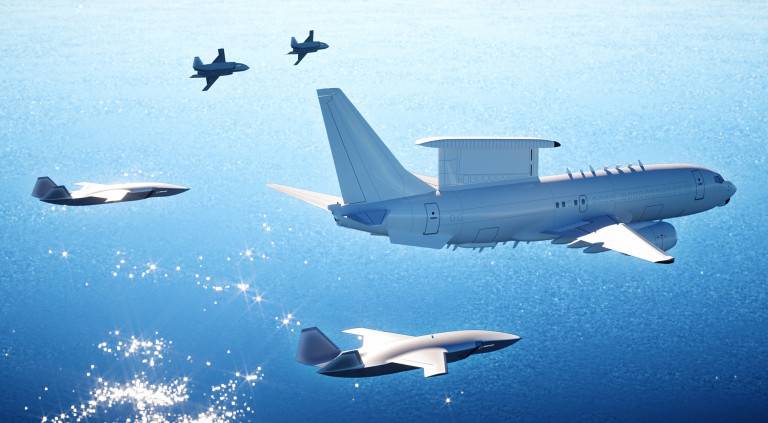
In Russia, the role of the slave is predicted on the prospective UAV Hunter. Supposedly, the Hunter UAV will be able to operate in conjunction with the fifth-generation fighter Su-57. It should be noted that the use of UAVs as slaves for fighters or AWACS aircraft may become the most realistic scenario for the Russian Air Force at the present time. The absence of global high-speed satellite communication channels limits the flight range of Russian UAVs when operating from ground points, and using an aerial platform as a command point will significantly expand their radius of action.
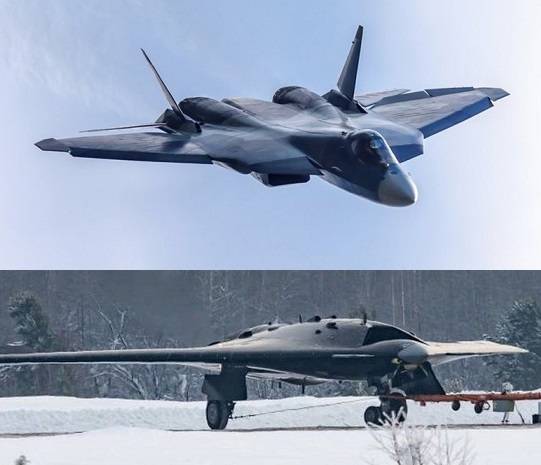
Thus, we can assume that the concept of the interaction of manned aircraft and helicopters with UAVs is one of the most promising areas for the development of the Air Force. But what does this have to do with aircraft carriers?
In September, 2015, the DARPA agency, announced the Gremlins program. The essence of the program is the creation of compact reusable multifunctional UAVs capable of being placed on air carriers - the C-17, C-130 Hercules transport aircraft and the B-52 Stratofortress, B-1B Lancer bombers, and later on tactical aircraft. Four companies were attracted to development: Composite Engineering, Dynetics, General Atomics Aeronautical Systems and Lockheed Martin.
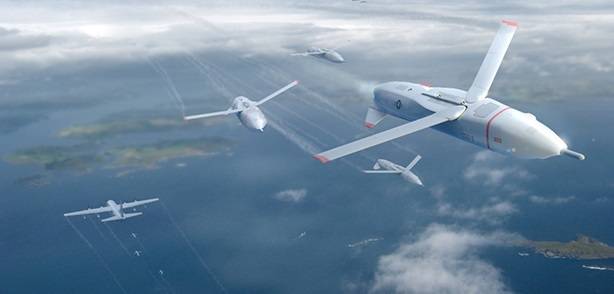
The company General Atomics Aeronautical presented in 2016, the layout of the UAV, developed under the program Gremlins. The General Atomics presented UAV is designed to run from a C-130 Hercules transport aircraft. The drone received a folding wing and a jet engine and the device looks like a JASSM cruise missile. His trials are scheduled to begin in 2019.
Dynetics unveiled its Gremlins experience in March 2019. The design of the UAV should allow them to carry various types of payload, depending on the combat mission, and to participate in autonomous as well as group unmanned operations (as part of the "swarm"). After completing the mission, the aircraft carrier must take the UAV and deliver it to the operational base, where the ground crew prepares them for the next operation during 24 hours.
Presentation of the company Dynetics on the program Gremlin
According to the terms of reference of the DARPPA UAV Gremlin must be able to perform at least 20 launches from the aircraft carrier (limited-reusable design). Perhaps in the future, this figure will be adjusted.
How promising is this project for the Air Force? In my opinion, the potential of the Gremlins program is quite high.
One carrier based on a transport aircraft with dozens of UAVs. Gremlin will be able to control a huge territory, quickly receiving information about the enemy and, if necessary, making decisions about his destruction. Potentially, Gremlin UAV groups can serve as a huge aperture antenna for detecting subtle or distant objects.
Flocks of "Gremlins" can be used to break through the air defense (AD) of the enemy. In this case, part of the UAV can carry specialized ammunition, part of the EW equipment, and if necessary, Gremlins themselves can act as weapons of destruction.
As part of the ammunition of strategic bomber UAVs, Gremlin can be used for defense against enemy fighters, of course, provided they are equipped with the appropriate ammunition.
Opportunities for jamming the enemy can be compensated for by creating highly secure communication channels, for example, as a backup, a one-way optical communication channel can be used via a laser beam a certain point). Improving management systems, using the capabilities of neural networks, will increase the autonomy of the UAV in terms of decision-making, reducing their dependence on human control.
It is not necessary to dwell on the need for a tough bundle of UAV and carrier. Potentially, various tactical groups can be implemented, for example, a tactical group consisting of an ARLO aircraft, an unmanned tanker, and a group of four to eight UAVs. Such a tactical group can solve the tasks of air defense, isolation of the combat area, enemy air defense breakthrough and many others.
Thus, the program of aircraft carriers, not developed in the XX century, in our time can be implemented at a new technological level. The interaction of manned and unmanned aerial vehicles will determine the capabilities of the world air forces of world powers in at least the first half of the 21st century.

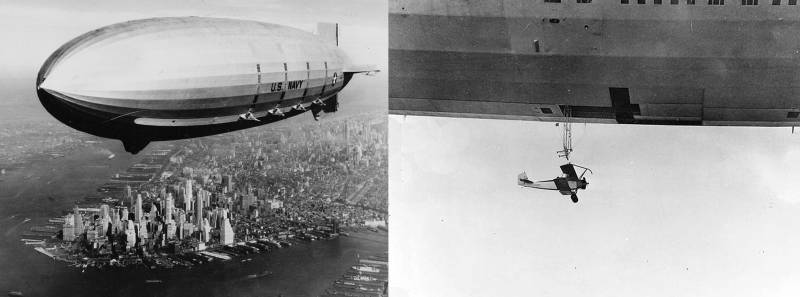


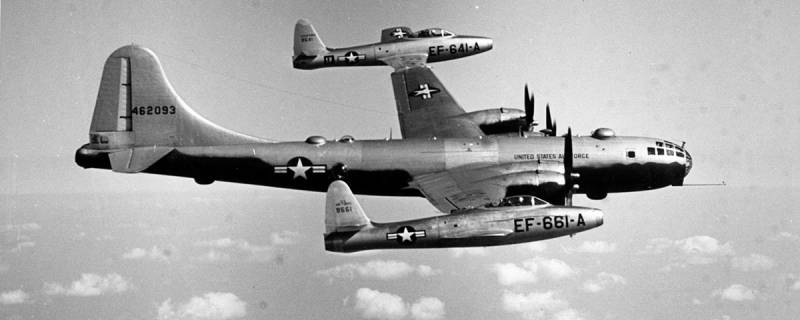
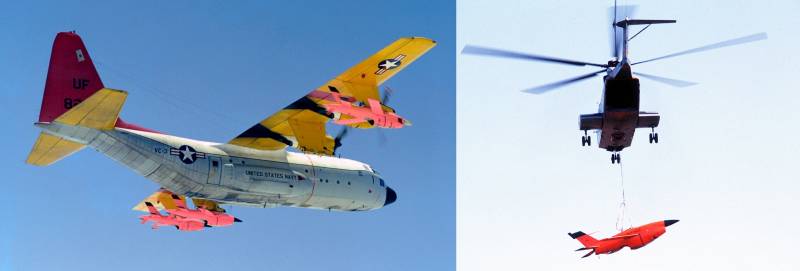
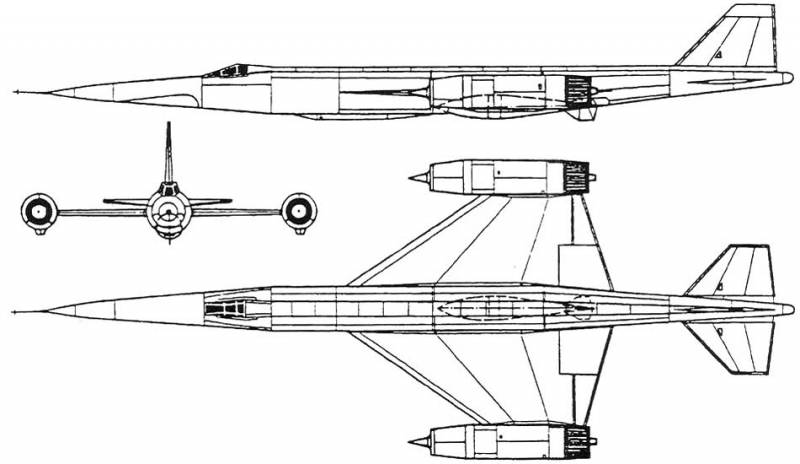
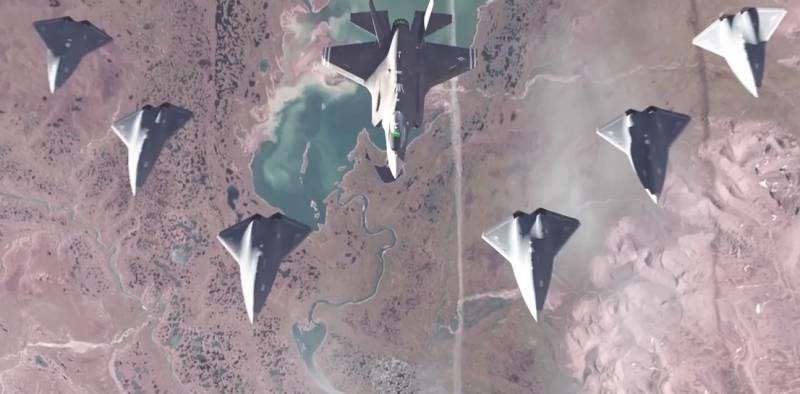
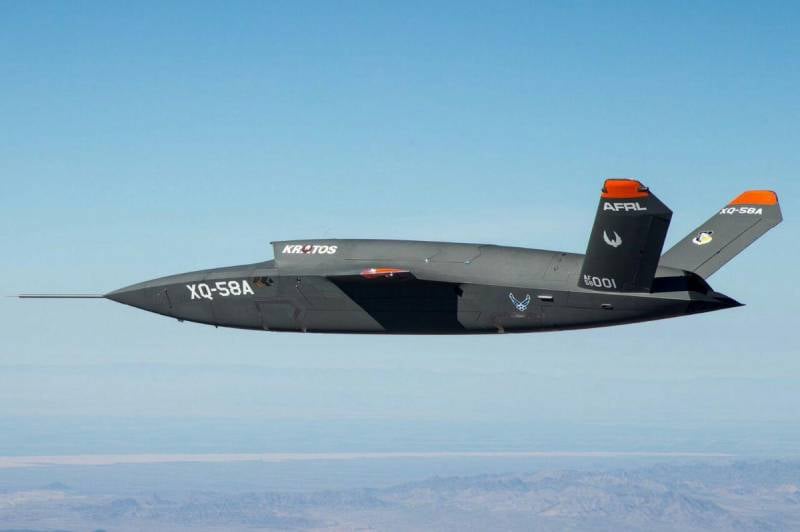
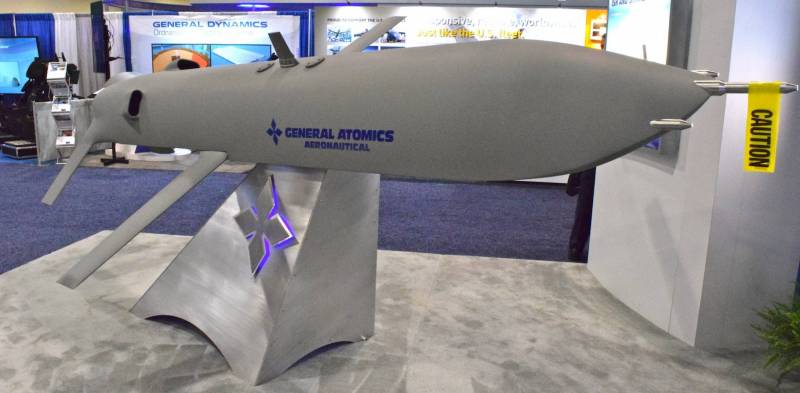

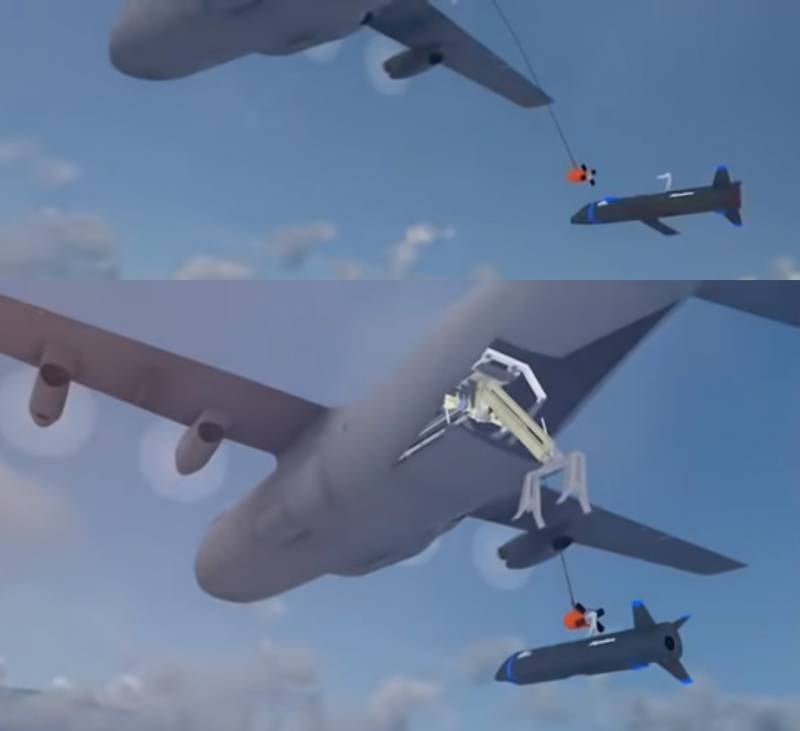
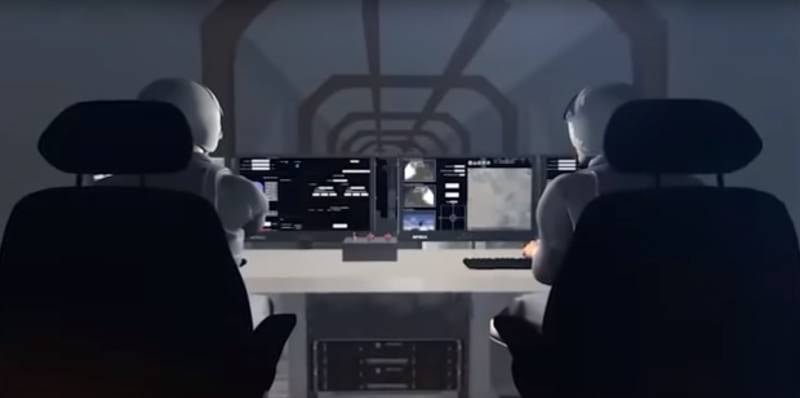
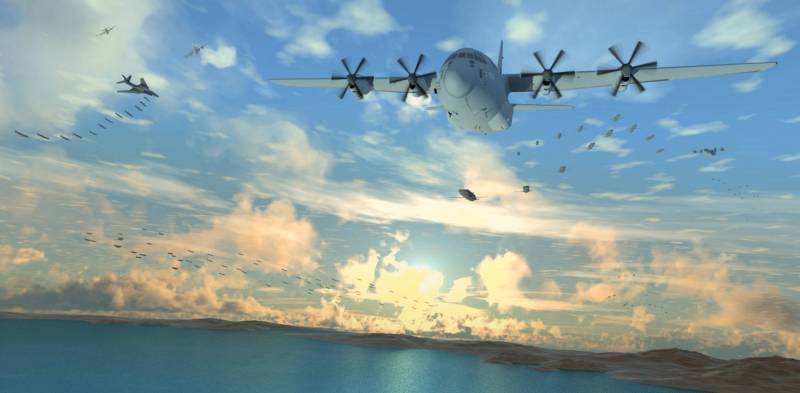
Information